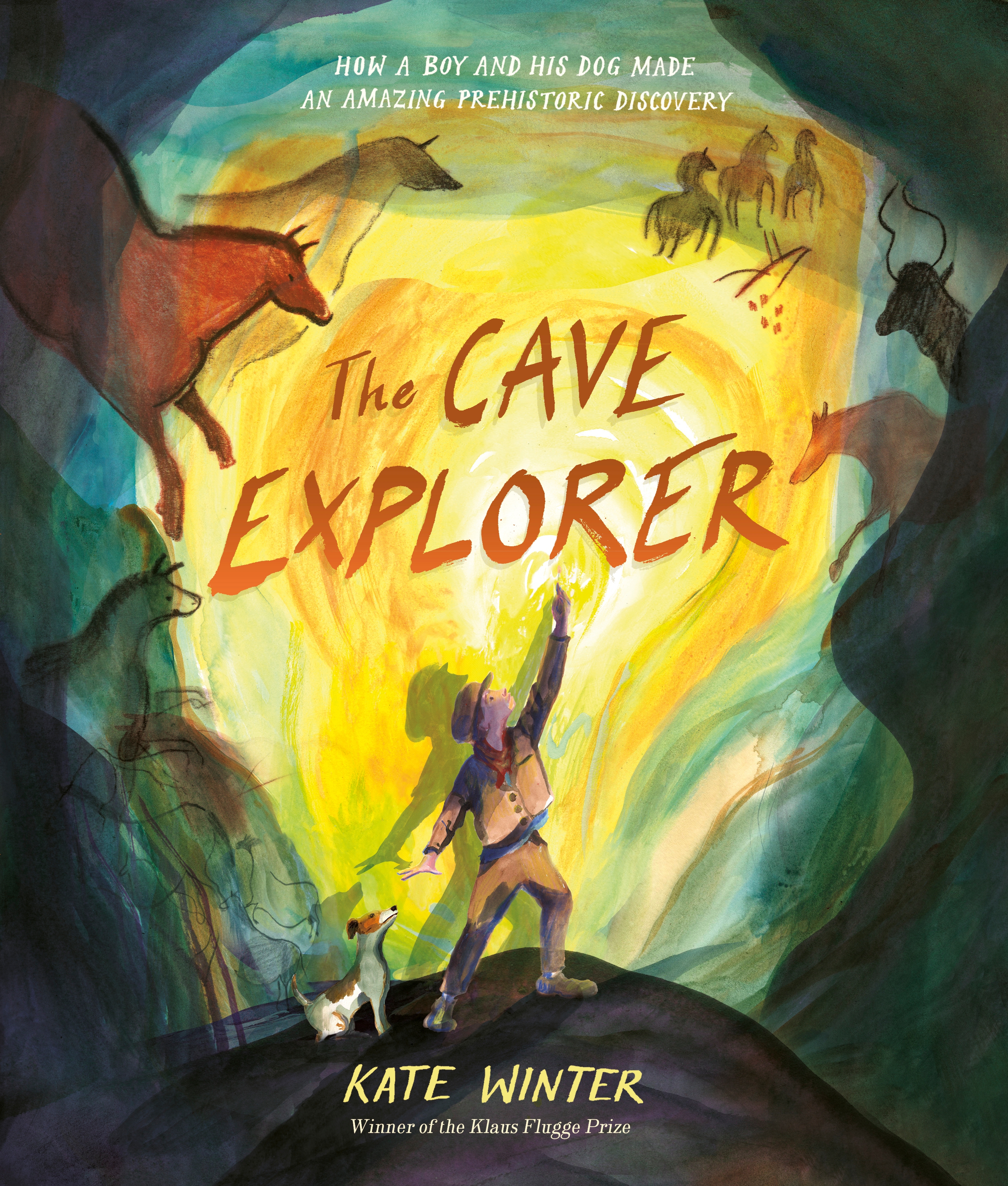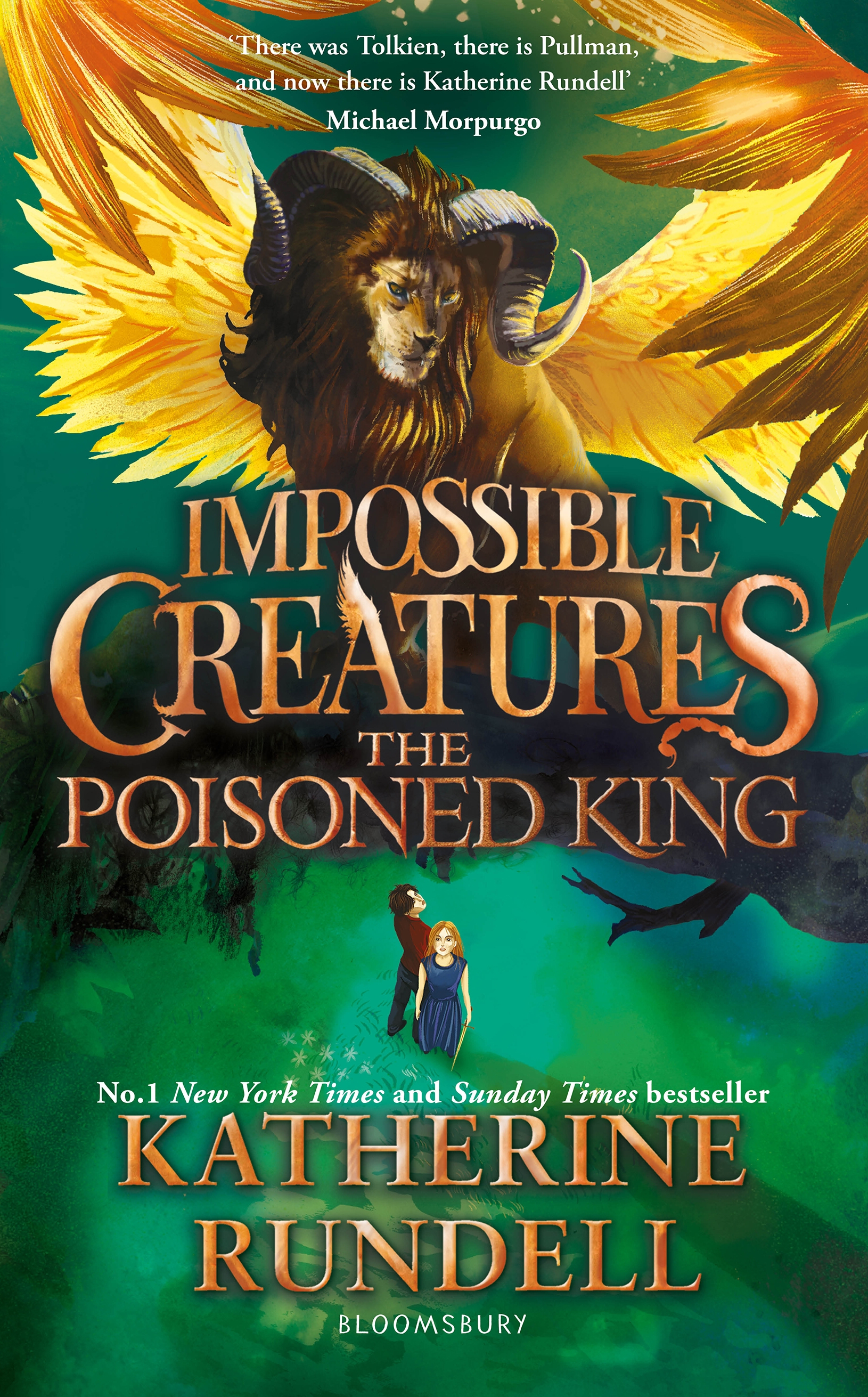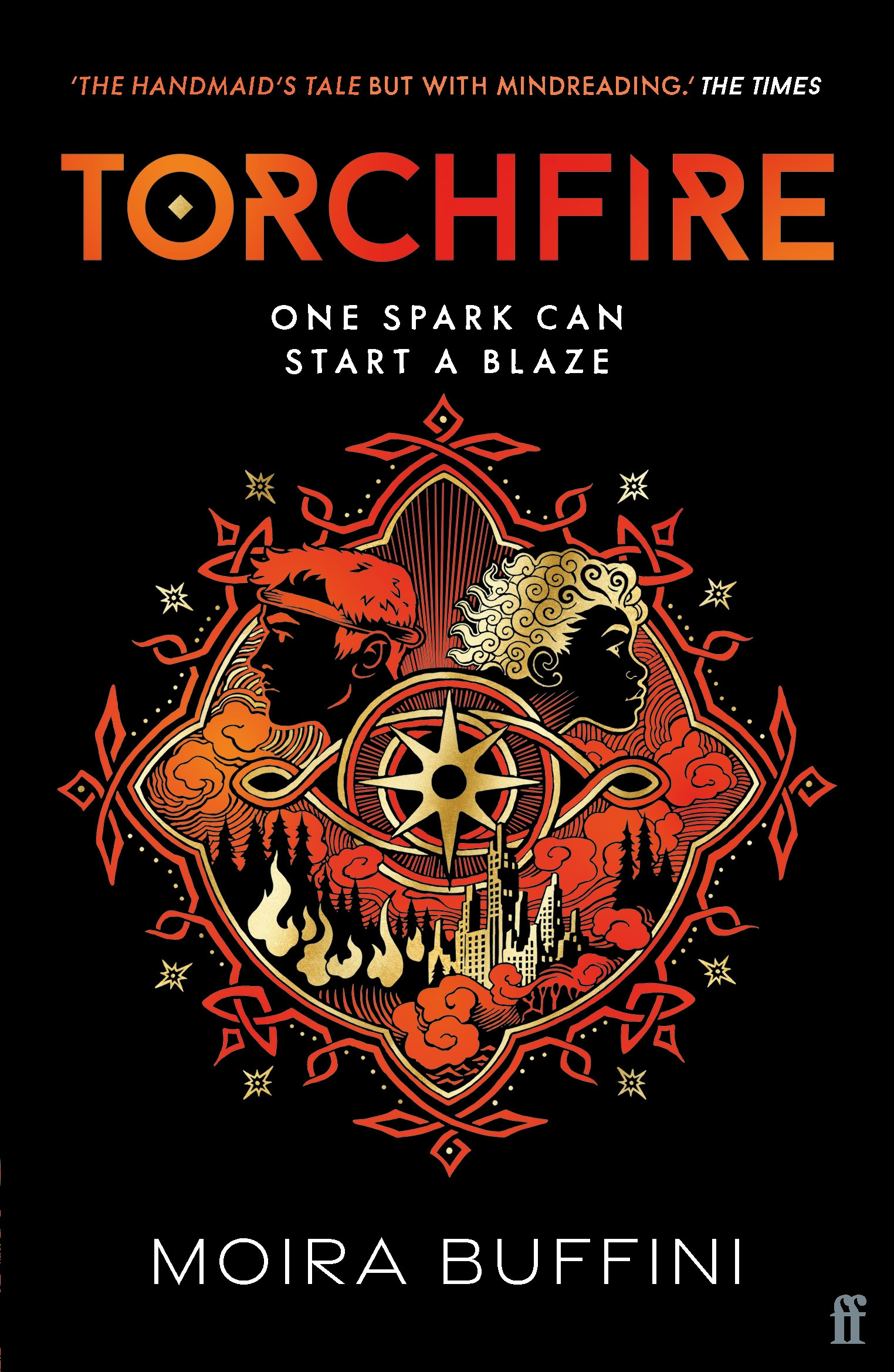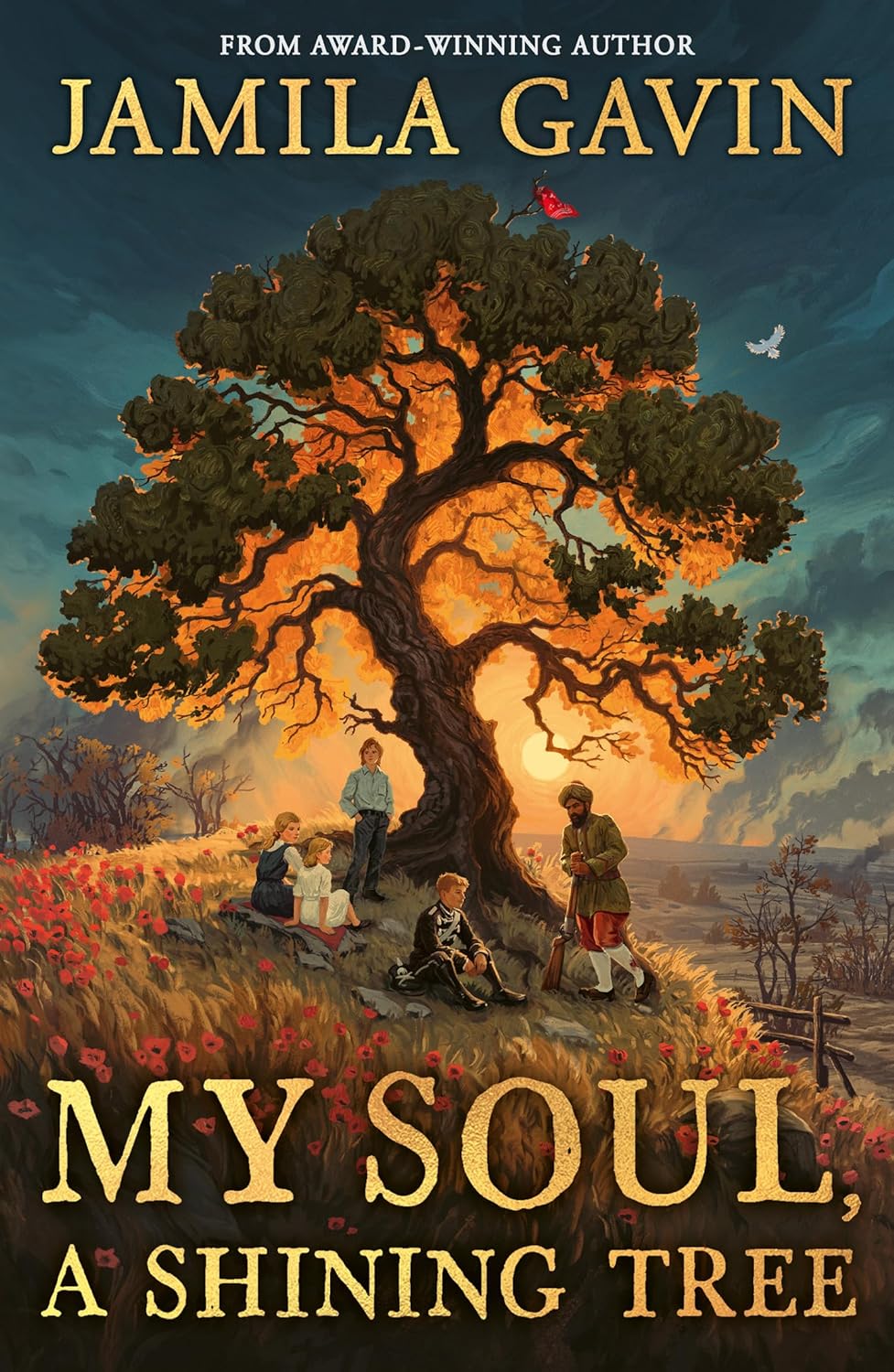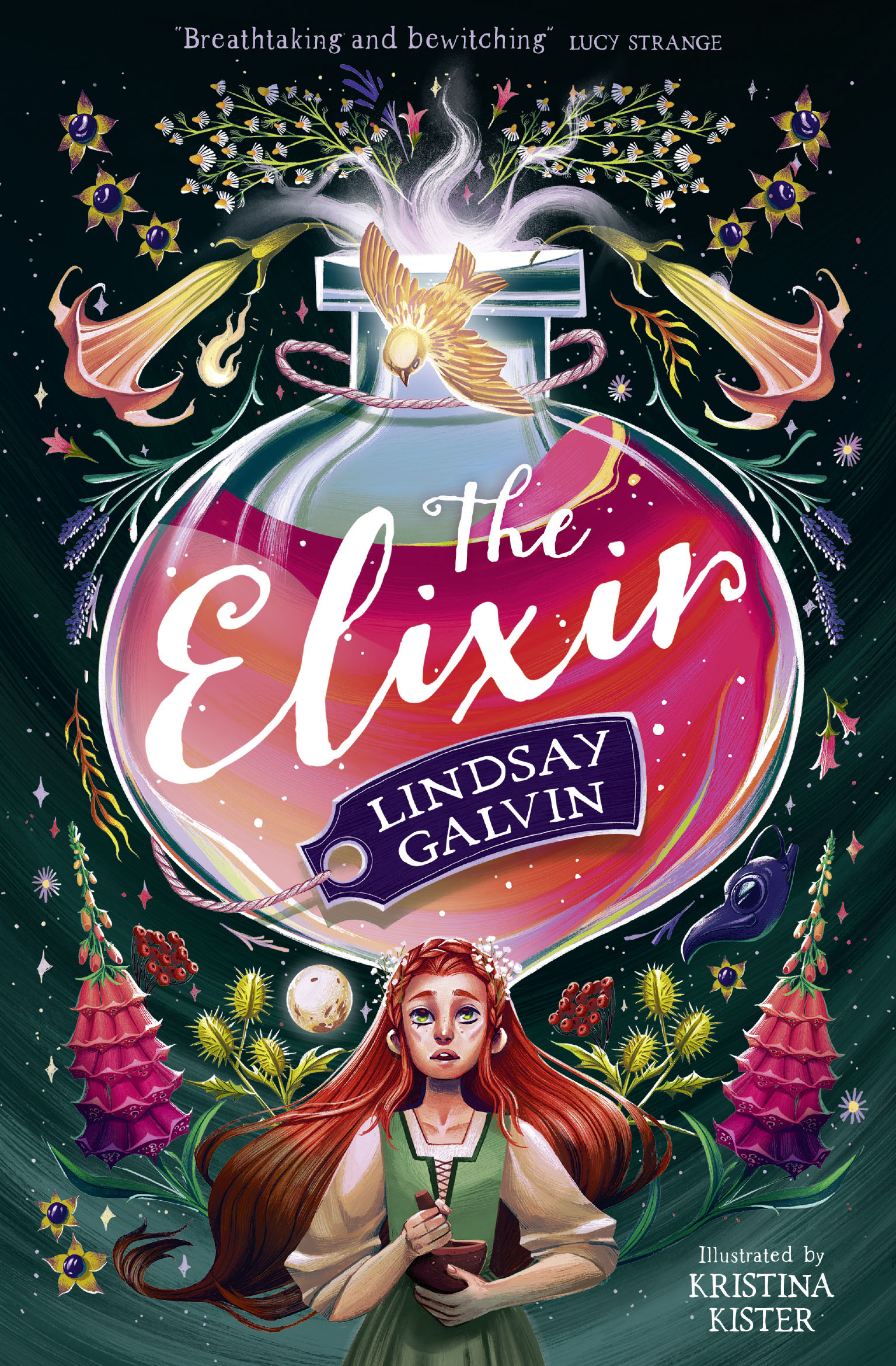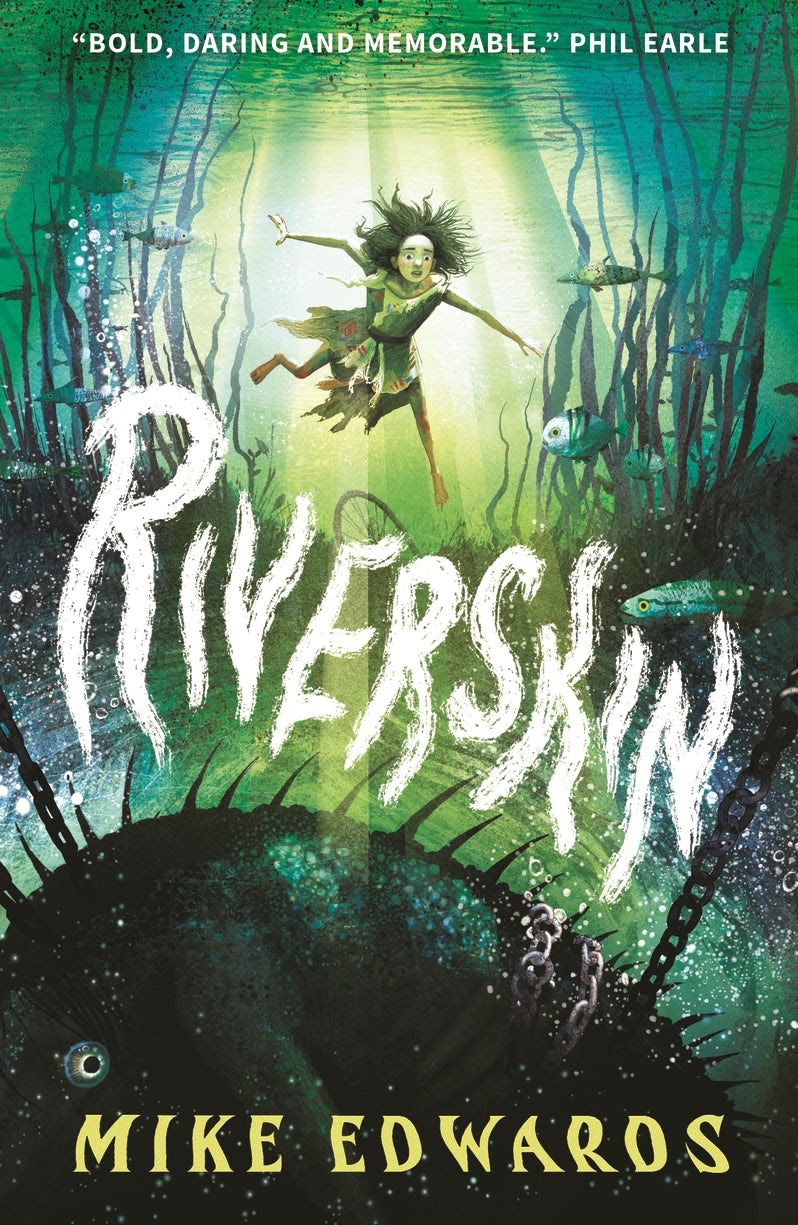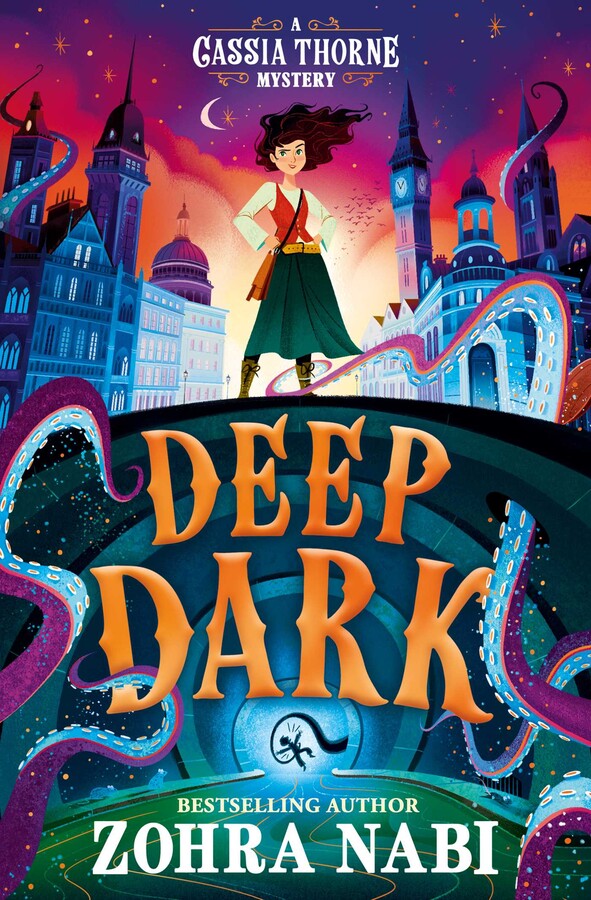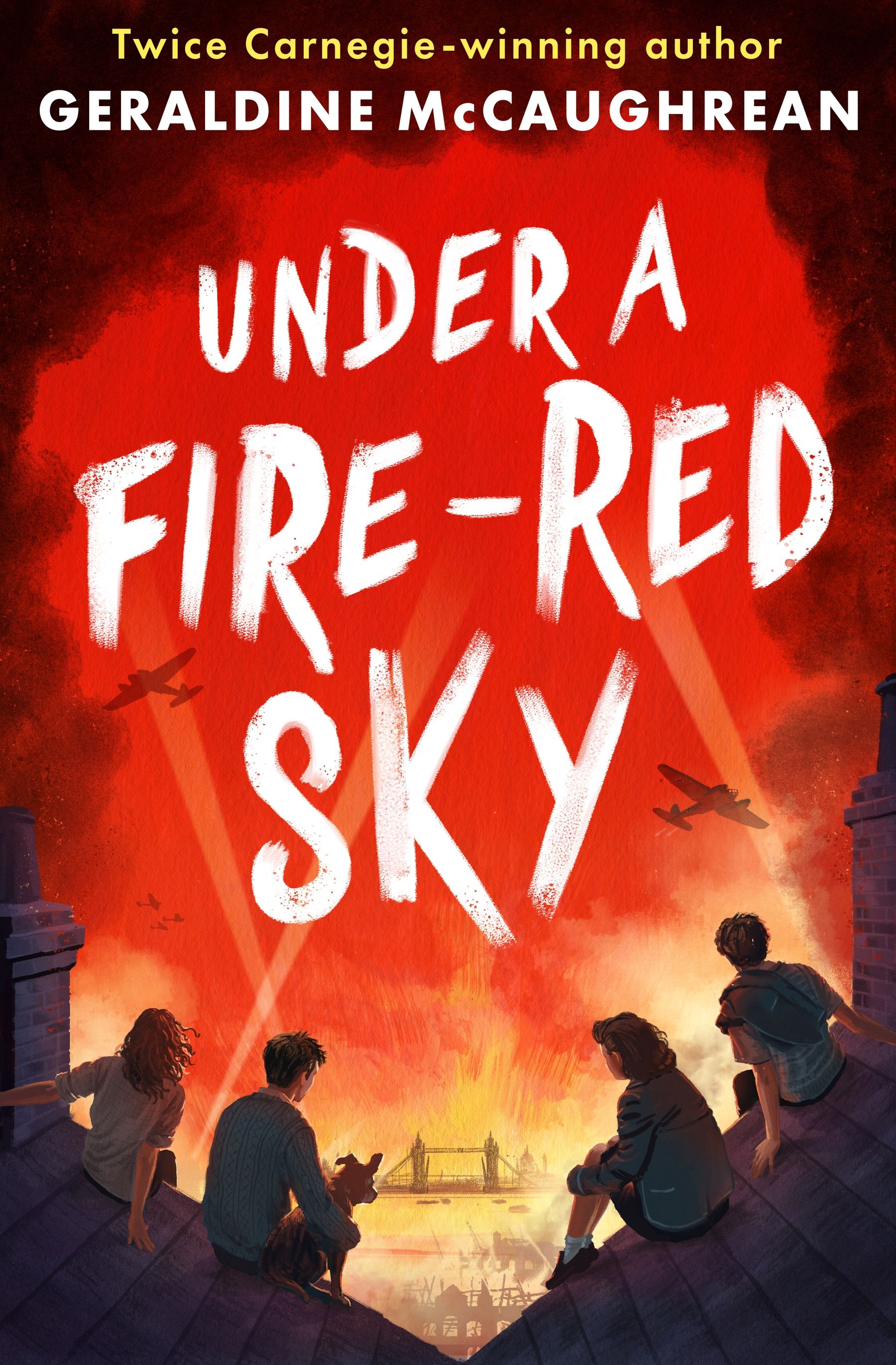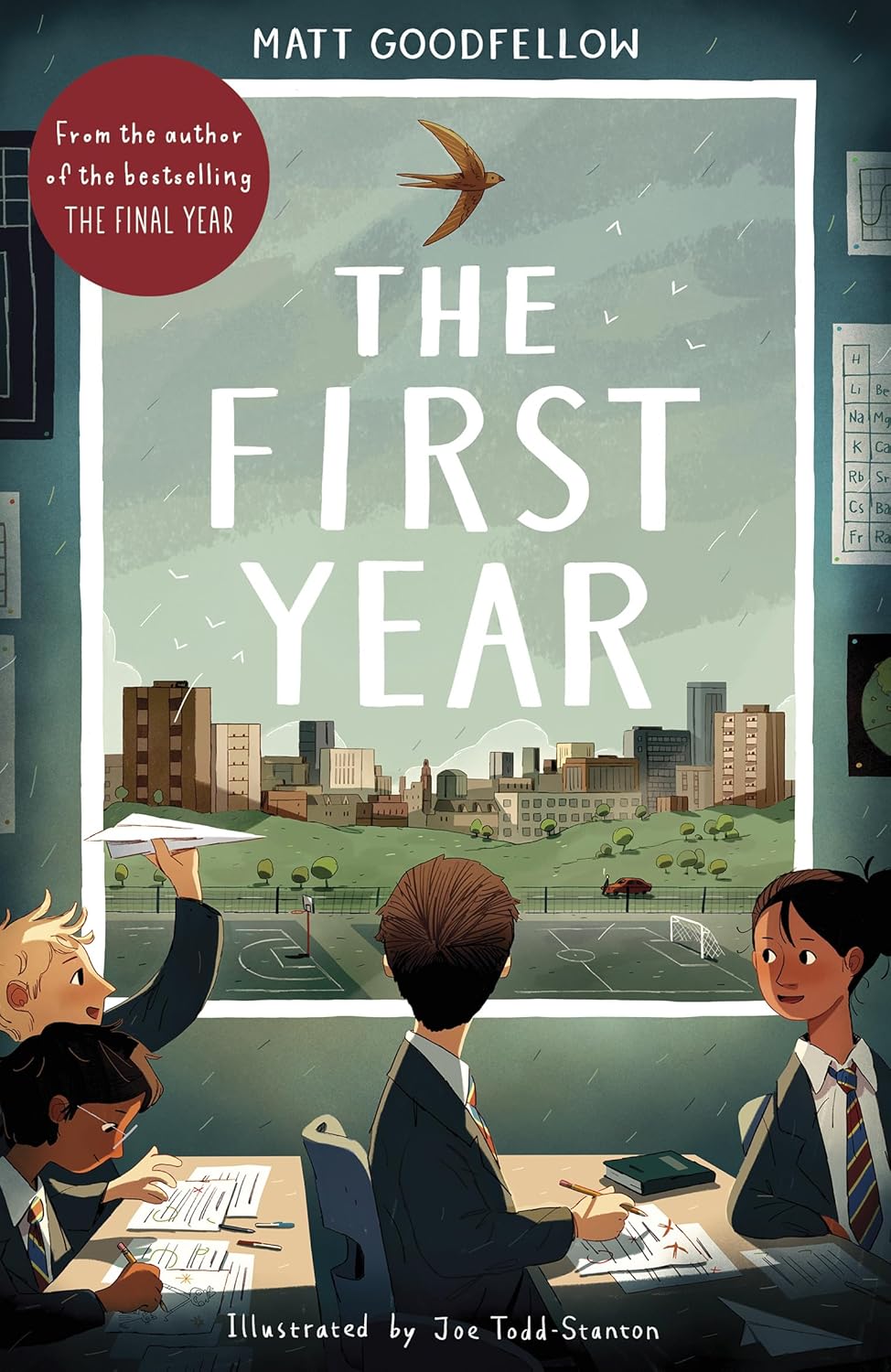The best children’s books of 2025

Rizu Malhotra is a schoolgirl from a rich family in New Delhi who finds herself at the centre of a social media witch-hunt after she has an illicit summer fling with her best friend’s boyfriend. “Hundreds of phones flicker with the same flame, a flicker that spreads to a hundred more. Everyone’s talking, all eyes on me. I can feel the heat, like fire is already licking at my skin,” she says.
It’s no coincidence that Rizu and her clique of glamorous friends have been studying Arthur Miller’s The Crucible in class and soon we’ve swapped the hysteria of 17th-century Salem for the modern witch-hunting realities of Uttar Pradesh as false accusations and a terrible act of violence leads to the 17-year-old fleeing her home and joining the followers of Shalini Devi, a charismatic vigilante badass, who keeps a tiger on a lead. “She tames tigers and stands her ground, a true warrior woman, with a roar unbound.”
This “warrior, legend, activist … goddess reborn in flesh” leads a fierce army of lower-caste women who have been wronged and abused. She’s inspired by Sampat Pal Devi, the real-life leader of the Gulabi Gang (or the pink vigilantes), the controversial human rights movement that targets corrupt policemen, abusive husbands and other men whose violence against women has gone unpunished.
Into this drama Manjeet Mann weaves some magical realism and a few other storylines of witch-hunting episodes from her mother’s youth, and from 300 years earlier. One of the young women killed in India’s earliest recording witch-hunting trials in 1792 appears to our heroine in hallucinatory visions and there’s a powerful theme of revenge.
I loved the combination of these elements and I liked Roar’s attempt to offer teenagers a different kind of read. How well it works as a whole, however, will depend on how much throbbing righteous fury you can take in your blank verse.
The experimental format makes it feel fresh, urgent and easy to read. Rizu’s viewpoint is revealed in columns of text on the left-hand side of the page, while the other characters “speak” on the right-hand side of the page — an effective trick that’s less annoying than it sounds.
• Join The Sunday Times Get Britain Reading campaign
On the other hand, there’s not much room for moral ambiguity. Mann won the 2021 Costa children’s book award for her second novel, The Crossing, but here it sometimes sounds as if she’s writing a pamphlet for Amnesty International rather than a novel, one hand typing on the laptop, the other held aloft in an activist fist.
Rizu’s journey gets really interesting in the second half, echoing the real-life example of Phoolan Devi, India’s notorious “Bandit Queen”, as she embraces violence and the mob. “My desire for revenge is a thirst that won’t be quenched.” But it all feels a bit rushed. So, a flawed but fiery call to arms for young feminists everywhere.
Roar (12+) by Manjeet Mann (Penguin £9.99 pp416). To order a copy go to timesbookshop.co.uk. Free UK standard P&P on orders over £25. Special discount available for Times+ members
• Read more book reviews and interviews — and see what’s top of the Sunday Times Bestsellers List
More great books for children
The Best of All Worlds by Kenneth Oppel
The Canadian author Kenneth Oppel once said that he would never have sold millions of books without video games. “I’m really the product of years of playing Dungeons & Dragons. A lot of parents get very concerned about kids gaming, but everything I learnt about storytelling … came from that discipline.”
Boy, does that show in his superb new novel, Best of All Worlds, which feels like Minecraft recast as an electrifying story for young adults. It reads like a thriller, but has the soul of a survival “sandbox” video game with an eerie element of The Truman Show thrown in for good measure.
Thirteen-year-old Xavier Oak had been hoping to spend the weekend playing role-playing video games with a girl who could become his girlfriend, but is instead dragged away to “decompress” at the family cottage with his dad and heavily pregnant stepmother.
They go more off-grid than they bargained for when they wake up the next morning to find their cottage replicated inside a strange dome, cut off from everything they knew. Xavier’s texts to his mum and older brother back home go undelivered. Invisible walls spit them back out when they try to escape. They are trapped. Their unseen captors’ intentions are unclear: they have provided goats, chickens, crops and orchards and even intervened to save Xavier’s newborn brother’s life.
So they survive for three years until, one day, new neighbours arrive. (In an extraordinary scene, Xavier watches an army of insect-like drones 3D print their home before his very eyes.) They bring guns, Bibles and a whole lot of new conspiracy theories over who has captured them and why.
Who should Xavier believe? His own family of Canadian liberals who think they’ve been abducted by aliens, and believe the best course of action is not to anger their captors? Or the new arrivals from Tennessee, who are led by their dad, Riley, a charismatic former prison warden — “the jailer, jailed” — who is convinced they are still on Earth and just need the courage to bust through the hatch they have spotted in the ceiling. “His certainty was like an acid, and I didn’t want it eating away at my own.”
What would be on the other side of that hatch? Death or “freedom”?
“Since the Jacksons had come, I’d been walking a tightrope. Government conspiracy at one end, alien abduction on the other. Depending on who was talking, I could almost reach either end — but never quite. Both propositions seemed insane.”
This is a novel that knows exactly the story it wants to tell. The fantasy is sparing, the focus as tight as the dome in which the families are trapped. I was captivated, wondering how it could be resolved in a satisfying way. The ending doesn’t disappoint. I’ve been thinking about it ever since. Utterly engrossing.
Guppy £14.99 pp256
Buy a copy of The Best of All Worlds
Dracula & Daughters (9+) by Emma Carroll
All is not well in Temstown. It has been 20 years since the last vampire outbreak. (Lots of blood. Wasn’t pretty.) But now, “theatreland’s most popular star”, 22-year-old Elsie Irving, has dropped dead on stage in mysterious circumstances. The theatre manager, Mr Bram Stoker, has scarpered. Dr Polidori is behaving very suspiciously. The distant town leader, Mr Helsing, for all his grand vampire-slaying achievements of the past, appears to be missing in action.
We meet Mina as she’s sneaking into a necropolis, intent on stealing a corpse so she can show off her dissection skills — women can be body-snatchers too! It’s the first clue that this is a story that dares to go in a new direction.
Emma Carroll takes a lot of the old vampire lore, reanimating familiar elements such as garlic, blood-sucking and stakes through the heart, and gives them a whole new afterlife in this high-spirited adventure for young readers. Sensitive nine-year-olds can rest easy — this is no horror story.
Sure, the fresh corpse Mina had in mind — Elsie’s — has vanished from its grave, but the action that follows cleverly flips the darker aspects of the traditional vampire tale.
“From what I can see of the coffin lid, the wood is splintered, the shards pointing upwards, indicating something has smashed its way out.” The nail marks in the mud suggest someone, something, has crawled its way out. “Cold, hard dread fills my chest. This isn’t a grave robber’s work. It’s a vampire’s.”
Elsie is on the loose, and Mina’s best friend, Varney, is the first to show signs of having been bitten.
“What will come next is the culling. It’s the only way to keep the rest of Temstown safe, and has to be done quickly because it only takes a few days for a victim to turn into a vampire,” Mina says. “I’m in agony. I’ve always known the way to get rid of vampires was to cull them, but I’d never considered what it would feel like if, in life, that vampire was your dear friend.”
Together with her sister, Buffy, and new ally, Bella, Mina starts questioning everything they have been told. What if they could heal vampires instead of killing them? What if — picture it, for a second — girls could do things better than the men who came before them?
There’s a lot to love with three redheaded heroines taking on the undead and the patriarchy, but too much telling and not enough showing means the story is oddly lacking in atmosphere. The big secret about the girls’ shared heritage is spun out until page 148, but doesn’t the book’s title and front cover rather spoil the surprise?
These are mere quibbles regarding a book that is pulsing with originality and offers up good, infectious fun.
Faber £7.99 pp320
Buy a copy of Dracula & Daughters
The Cave Explorer (5+) by Kate Winter
Imagine the primeval thrill of stumbling upon a forgotten cave and discovering a fabulous, flickering art show from 17,000 years ago.
This exceptional picture book for readers of all ages takes us back to the moment a French teenager and his dog experienced exactly that. How the dog felt about the discovery is lost to the mists of time, but The Cave Explorer celebrates all the magic and wonder that Marcel Ravidat must have felt at 18, when he and his three friends found the cave art at Lascaux — and briefly kept it a secret — before sharing their discovery with the rest of the world.
“This book will take you back thousands of years to some of the very first stories and introduce you to the people who told them. But it begins in an unexpected way. It begins with a boy called Marcel Ravidat and his dog, Robot.”
The first pages set the scene in wartime France, before clever page design encourages us to turn the book vertically as we follow the boys on their descent down into the “inky blackness”.
“Marcel struck a match and lit his oil lamp. When he lifted it up he couldn’t believe what he saw in the flickering light.” When you open up the panoramic fold-out pages, it feels as if the cave lights up in your hands. The astonishment, the wonder, that feeling of a connection to something you don’t quite understand … it’s all there, in Kate Winter’s own evocative artwork that mimics the earth pigments of red and yellow ochre, black manganese and charcoal on the cave walls. And who doesn’t love an auroch?
Too many non-fiction books for children try to cram in too much information. This one lets the light in. It digs a little deeper to share unfamiliar facts about the subject — Lascaux’s influence on Picasso, the fact the images appear to move when a light is passed over them in a certain way — but then understands it must also give them space to breathe.
Ravidat became an official guardian of the cave, but his story quickly gives way to the bigger questions: “Who painted these?” “Why are they here?” “Were they representing the spirit world?” “Were they part of a performance?” Another unanswered question could be: what happened to Robot?
There’s a mix of factual pages — showing the materials of “the prehistoric paintbox” and how pigments were blown through “bone tubes” — and imagined scenes, showing what those old Stone Age shamans might have been up to.
Winter won the 2024 Klaus Flugge prize for The Fossil Hunter, a picture book about Mary Anning. That too is gorgeous but I think this one is even better. A treasure.
Puffin £14.99 pp75
Buy a copy of The Cave Explorer
The Poisoned King (8-12) by Katherine Rundell
Katherine Rundell’s Impossible Creatures is the kind of book series parents hope their children will love — with good reason. It’s dazzling, literary and has absolute faith that bright, young minds can handle words like “amanuensis”. It’s the literary equivalent of saying: “Put away that ugly, plastic Hot Wheels track, child, and play instead with this ingenious, hand-crafted wooden toy from Sweden.” It is, in other words, an emblem of exquisitely good taste.
So does The Poisoned King, the second in the five-book series, live up to the hype? On one hand, it’s a return to reliably sparkling form, another Rundell adventure so classy and timeless it could have been written by quill on the rooftop of an Oxford college.
We’re back in the Archipelago, “the last surviving magical place” that remains home to creatures of myth, like “thirty-seven species of dragon” and “mermaids with shimmering tails twenty feet long”. But poison is “seeping into the magic-drenched life of the Archipelago”. The Great Dragons are dying. The sphinxes could be next.
Christopher, whom we met in book one, heeds the dragons’ desperate call to return to the islands and this time has a new ally. Anya Argen is a princess, albeit one of those good ones who don’t believe in hereditary monarchy. “Birth, Anya said, was a mad, a frivolous, a lunatically unhinged way to decide who should rule a kingdom. It left you vulnerable to uncles.”
Rundell’s wonderful early novels were unconventional one-offs that went in unexpected directions, so the biggest surprise here is the lack of surprises. Plot and character submit to convention. Anya may talk about wreaking revenge for the murder of her grandfather and the wrongful imprisonment of her father, but her good behaviour is never in doubt. Nor is the identity of the poisoner.
There’s a climactic sword fight — “Look out! […] He has a sword!” — and everyone behaves exactly as heroes and villains have behaved in fantasy novels through the ages. Instead, style is the star of the show. Each sentence is polished to perfection: “Elsewhere in the castle, a man was being murdered”; “It was dusk, and the gold beaks of the gaganas caught the moonlight and sent it skittering across the stone.” Often, they end with a raised authorial eyebrow: “Gaganas have an entire language of head movement, and they had taught the language to Anya. She could say a hundred things with a twist or nod of her head. Only ninety-four of them were printable.”
Occasionally, they slip into smartassery: “Now, are you going to understand? Or do I need to compose it into a multi-part opera?”
The imaginative scope of this series remains colossal. It is packed full of passages that sound elegant and wise. The writing is as bedazzling as any dragon’s hoard, but I wonder whether, like those hard, shiny coins, this is a story to be admired, rather than adored.
Bloomsbury £14.99 pp336
Buy a copy of The Poisoned King
Torchfire (14+) by Moira Buffini
You’ve got to hand it to Moira Buffini. She can’t half name characters: Tombean Finch. Raoul Harrier. Rye Tern. Hoopoe Guinea. Chaffinch Greening. Great Brother Peregrine. It’s just as well because there is a huge cast of them, all colliding, conniving, kissing and criss-crossing each other in this dazzling second instalment of The Torch Trilogy.
To recap, Songlight, the first book in the series, introduced us to a dystopian future where civilisation as we know it is long gone, and the groups who remain are at war. Only the gifted few have “songlight” — the ability to telepathically connect with others. In a repressive society like Brightland, where girls are bred for marriage and boys are bred for war, anyone caught in possession of such a subversive power will have a lead band welded on to their skull to block the transmission of their thoughts or, worse, be cast to the Chrysalid House, where they are effectively lobotomised and doomed to live out the rest of their days, blank-eyed behind gauze masks as lower-caste “chrysalids”. (I really do love the chrysalids. They may not have much to say, but they set the strange tone and create the atmosphere for the whole series.) Others are captured as “sirens” and used to hunt down their fellow telepaths, or “torches”, like dogs on a leash.
• Pledge to read for pleasure for at least 10 minutes a day
The first book went on to win this year’s YA Book Prize. We begin the sequel just as our heroine, Lark, has had her secret gift exposed — she is now the “number one mind-twisting whore of Northaven” — and her plans to elope with her forbidden sweetheart thwarted. Forced to betray poor Rye, she’s now on the run.
Meanwhile, Nightingale, Lark’s greatest ally and the girl with the most powerful songlight of them all, has been kidnapped by Zara Swan, a mercurial manipulator, a beautiful propagandist and the only woman at the heart of the ruling elite. From this gilded cage, Nightingale takes great risks as the spy inside, “sending up her songlight” to transmit warnings to allies plotting to overthrow the regime. Who will outwit whom?
The story is told from multiple points of view and each character’s voice lights up the path through the dense, action-packed plot, as if striking a match in a cave. The writing is so seductive and the world so skilfully constructed that Buffini manages to introduce a spaceship into the mix and it feels completely natural. Torchfire is bolder, hornier and even more ambitious than the first book. At 560 pages, it also feels like a world that could sustain several lush hours of television drama. By the end, all the chess pieces have been realigned, ready for a tantalising love triangle. Bring on book three.
Faber £8.99 pp560
Buy a copy of Torchfire
My Soul, A Shining Tree (9+) by Jamila Gavin
My Soul, A Shining Tree tells the story of three people — a Belgian girl, a German teenager and an Indian soldier — whose lives crisscross amid the chaos of the First World War. Watching it all unfold, “almost queen-like”, is the wild walnut tree on the ridge. “The souls of birds and angels have rested in my branches; and young children too. But I’ve never seen anything like this.” Jamila Gavin is not an author who shies away from tough subjects. Her previous prize-winning novels have explored other violent eras, but are always drawn with great tenderness and sensitivity. Once again she delivers a quietly powerful novel that is a must-read for anyone interested in the real lives behind the official histories. Superb.
Farshore £8.99 pp160
Buy a copy of My Soul, A Shining Tree
Dragonborn (9-12) by Struan Murray
The twist in Struan Murray’s Dragonborn is a good one. Our heroine doesn’t ride a dragon or train a dragon; she is a dragon. A fiery power resides within 12-year-old Alex, who discovers that she is descended from a line of dragons that took human form a long time ago. Cue a richly imagined journey of self-discovery in which she must learn how to transform into her true dragon self by harnessing big emotions and saying goodbye to her childhood. Think Tolkien meets Teen Wolf. There’s plenty to entertain fans of AF Steadman and confident readers who have grown out of Cressida Cowell. A sophisticated story that never talks down to its readers or underestimates their appetite for complex faerie worlds infused with British folklore. Come for the exceptional writing. Stay for the talking skulls and secret cities.
Puffin £14.99 pp352
Buy a copy of Dragonborn
The Elixir (9+) by Lindsay Galvin
A girl witch teams up with Isaac Newton. The good news for Ann Storer is that she has just discovered the elixir of life. The bad news is that it’s the 17th century, there’s a witchfinder skulking round town and young women with special powers are not exactly celebrated in her part of Lincolnshire. I’m already a big fan of Barrington Stoke, the publisher that invites the best authors of contemporary children’s fiction to write novellas in its signature dyslexia-friendly format. Lindsay Galvin has taken a tiny historical nugget — that Sir Isaac Newton once lived above an apothecary in Grantham — and polished it into an intriguing, unconventional story that spans themes of science, alchemy and witch trials within just 120 snappy pages. Galvin is a terrific writer of historical fiction for children and here concocts an atmospheric tale with appeal to both reluctant and confident readers.
Barrington Stoke £7.99 pp120
Buy a copy of The Elixir
Choose Your Own Evolution (7+) by Jules Howard, illustrated by Gordy Wright
“Go extinct or survive? You decide!” Behold a brand new species of book that, very cleverly, takes the concept behind the Choose Your Own Adventure stories and applies it to science. The result? An addictive romp through 570 million years of history that puts the child at the centre of the story. It works brilliantly. My sons (aged 11 and 6) aren’t enthusiastic readers of fiction, but this one — part game, part book — had them flicking back and forwards through the pages together for almost the entirety of a two-hour flight. Jules Howard is a wonderful communicator, and Gordy Wright’s illustrations enliven every page. Forget mammoths and sabre-toothed tigers. Here the blobs, hagfish and lungfish are the stars of the show.
Nosy Crow £14.99 pp112
Buy a copy of Choose Your Own Evolution
Riverskin (9+) by Mike Edwards
Tess lives in the “turns”, a network of tunnels under the River Tees with her Aunt Peg, a slippery, “toad-green”, webbed-fingered creature inspired by Peg Powler, a water witch from northern English folklore who was said to snatch naughty children from the banks of the Tees. Here, ambiguous Aunt Peg is also the jailer of Unkle Darkwater, an angry, menacing presence, who is kept chained up in one of the pits. The prisoner is “slime-slick with river filth, scarred, skin rotty and scab-hard. His breath is heavy, sour-seethy.” Aunt Peg getting “muddled and mind-slippy”. Which one should Tess trust? Riverskin is a bold, evocative debut — The Little Mermaid meets Skellig but with discarded shopping trolleys and techno. Mike Edwards’s prose has the energy you might expect from a spoken-word performer, and hats off to him for dressing his heroine in a Tesco carrier bag.
Walker £7.99 pp272
Buy a copy of Riverskin
• The 9 best graphic novels for kids – recommended by teachers
What Happens Online (11+) by Nathanael Lessore
One of my favourite books of the year so far, this is Adrian Mole for the gaming generation. Nathanael Lessore is a rising star and his latest tale, about a wisecracking introvert who suddenly finds popularity through an online alter ego, has had my 11-year-old son in stitches. The whip-smart dialogue really captures the way he and his friends speak. Beneath the jokes, there’s real emotional depth to this cautionary tale about balancing your online life with your real one. It also provides youngsters with the added pleasure of explaining — tweensplaining? — all the slang terms to the adults in their lives. A brilliant read for tween boys (and girls) everywhere.
Hot Key £8.99 pp320
Buy a copy of What Happens Online
Deep Dark (9+) by Zohra Nabi
There’s no shortage of children’s adventure stories set in ye olde London, but this one stands ragged shoulders above the rest. It’s the 1830s and street urchins are vanishing. Strange figures are shadowing the markets and something’s lurking in the sewers. No one seems to care apart from Cassia Thorne, a debtor’s daughter who scrapes a living selling ballads at Bartholomew Fair. Determined to solve the mystery, she teams up with Teo, an orphan based on the children who really were trafficked from Italy to London to work as street musicians. Their world is made vivid in this sophisticated and exciting adventure, inspired by Dickens’s Little Dorrit. Outstanding.
Simon & Schuster £7.99 pp336
Buy a copy of Deep Dark
• Seven books to get kids reading again — Dr Seuss, Wimpy Kid and more
Under A Fire-Red Sky (12+) by Geraldine McCaughrean
Geraldine McCaughrean has been described as “one of the greatest living children’s authors” and this novel — her 170th — is a masterclass in urgent, powerful storytelling. It follows the fates of four young Londoners who forge a close friendship when they make a split decision to avoid evacuation and flee back to the bombed out, rubble-strewn neighbourhood they call home. The world of the Blitz is brought into raw, flaming life. It feels like plunging into one of those black-and-white Pathé film reels and finding everything in colour. Although the setting may be historical, the issues of peace, conflict, forgiveness and revenge are anything but. Brutal, beautiful and wise.
Usborne £8.99 pp288
Buy a copy of Under a Fire-Red Sky
Black Star (12-16) by Kwame Alexander
The words “blank verse” and “baseball” don’t float your boat? No matter, because Black Star is wonderful whether you like sport or not. It’s not really about baseball at all; it’s about being a black 12-year-old girl in 1920s Virginia. In this age of shortened concentration spans, blank verse is the perfect format, distilling big ideas into short and snappy stories that deliver plenty of literary bang for their buck. As always, Kwame Alexander’s writing zings with confidence. Come for the quick read, stay for the crash course in the poetry of Gwendolyn Brooks and Harlem Renaissance pioneers such as Langston Hughes. “This ball’s on fire, better sound the alarm.”
Andersen £14.99 pp384
Buy a copy of Black Star
• Eight books to get your child excited about reading
The First Year (9+) by Matt Goodfellow, illus. Joe Todd-Stanton
Another blank verse novel, but this time with a very northern English accent. Nate has just navigated a difficult final year of primary school but now a new world of anxieties and expectations lies ahead. It’s called … secondary school. “Teachers with tans wear new start smiles: Welcome, welcome. This way to the hall. This must be how gladiators felt on their way to the arena.” This is a big-hearted book with moments of lyricism and a little bit of grit. It’s honest and relatable but never miserable. A particularly good read for primary school-leavers who are about to take their first flight to secondary school.
Otter-Barry £9.99 pp480
Buy a copy of The First Year
Unico: Hunted (Vol 2) (8+) by Osamu Tezuka and Samuel Sattin, illus. Gurihiru
Osamu Tezuka, the “godfather of manga”, died before he could give one of his beloved characters an ending. Almost 50 years later the baton has been passed to the American writer Samuel Sattin, and the artist duo known as Gurihiru to complete the tale of Unico. And what an enchanting reboot it is. The artwork does justice to the cinematic sweep of Tezuka’s work, and the story of a “brave, young unicorn” lost in time and space, spreading love wherever he goes, while struggling to remember who he is or where he came from, will appeal to a broad range of age groups, from eight upwards. Spellbinding.
Scholastic £10.99 pp224
Buy a copy of Unico: Hunted
Source link


